KLF7 orchestrates hippocampal development through neurogenesis and Draxin-mediated neuronal migration
- PMID: 40762575
- PMCID: PMC12377812
- DOI: 10.1242/dev.204718
KLF7 orchestrates hippocampal development through neurogenesis and Draxin-mediated neuronal migration
Abstract
The hippocampus, a brain region that is crucial for cognitive learning, memory and emotional regulation, undergoes its primary development during embryonic and early postnatal stages. Krüppel-like factor 7 (KLF7), a transcription factor associated with autism spectrum disorder and intellectual developmental disorders, plays a pivotal role in brain development. In this study, we investigated the role of KLF7 in hippocampal development using conditional knockout mice [Emx1-Cre;Klf7Flox(F)/F]. We found that KLF7 deletion in hippocampal progenitors resulted in significant hippocampal shrinkage, disrupting neurogenesis, neuronal differentiation and migration. KLF7 mutant mice exhibited abnormal neuronal projections, anxiety- and depression-like behaviors, and memory impairments. Transcriptomic profiling identified Draxin, a neural chemorepellent, as a key downstream target of KLF7. Remarkably, overexpression of Draxin rescued dentate gyrus granule cell migration defects in KLF7 mutant mice. These findings demonstrate that KLF7 is essential for proper hippocampal development and function, regulating neuronal migration through Draxin. This study provides mechanistic insights into the neurological deficits associated with KLF7 pathogenic variants and highlights potential therapeutic targets for neurodevelopmental disorders.
Keywords: Draxin; Hippocampus; Krüppel-like factor 7; Mouse; Neurogenesis; Neuronal migration; Neuronal projections.
© 2025. Published by The Company of Biologists.
Conflict of interest statement
Competing interests The authors declare no competing or financial interests.
Figures

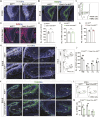
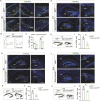
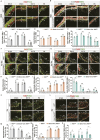
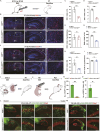


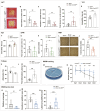
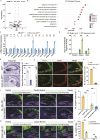
Similar articles
-
Transcription Factor EB Overexpression through Glial Fibrillary Acidic Protein Promoter Disrupts Neuronal Lamination by Dysregulating Neurogenesis during Embryonic Development.Dev Neurosci. 2025;47(1):40-54. doi: 10.1159/000538656. Epub 2024 Apr 18. Dev Neurosci. 2025. PMID: 38583418 Free PMC article.
-
Short-Term Memory Impairment.2024 Jun 8. In: StatPearls [Internet]. Treasure Island (FL): StatPearls Publishing; 2025 Jan–. 2024 Jun 8. In: StatPearls [Internet]. Treasure Island (FL): StatPearls Publishing; 2025 Jan–. PMID: 31424720 Free Books & Documents.
-
Krüppel-like factor 7 deficiency disrupts corpus callosum development and neuronal migration in the developing mouse cerebral cortex.Brain Pathol. 2023 Sep;33(5):e13186. doi: 10.1111/bpa.13186. Epub 2023 Jul 3. Brain Pathol. 2023. PMID: 37401095 Free PMC article.
-
Memory processing by hippocampal adult-born neurons.Neurobiol Learn Mem. 2025 Jul;220:108062. doi: 10.1016/j.nlm.2025.108062. Epub 2025 May 8. Neurobiol Learn Mem. 2025. PMID: 40345378 Review.
-
Mitochondrial regulation of adult hippocampal neurogenesis: Insights into neurological function and neurodevelopmental disorders.Neurobiol Dis. 2024 Sep;199:106604. doi: 10.1016/j.nbd.2024.106604. Epub 2024 Jul 11. Neurobiol Dis. 2024. PMID: 39002810 Review.
References
-
- Alexandre, V., Walz, R., Bianchin, M. M., Velasco, T. R., Terra-Bustamante, V. C., Wichert-Ana, L., Araújo, D., Machado, H. R., Assirati, J. A., Carlotti, C. G.et al. (2006). Seizure outcome after surgery for epilepsy due to focal cortical dysplastic lesions. Seizure-Eur. J. Epilep. 15, 420-427. 10.1016/j.seizure.2006.05.005 - DOI - PubMed
-
- Angevine, J. B.Jr. (1965). Time of neuron origin in the hippocampal region. An autoradiographic study in the mouse. Exp. Neurol. Suppl. Suppl. 2, 1-70. - PubMed
MeSH terms
Substances
Grants and funding
LinkOut - more resources
Full Text Sources

